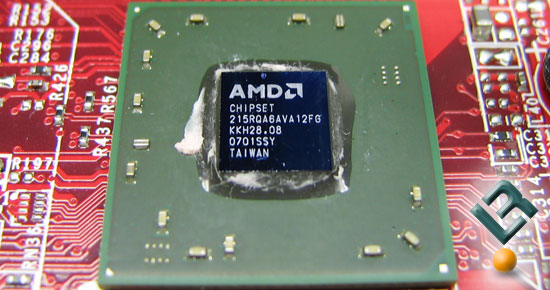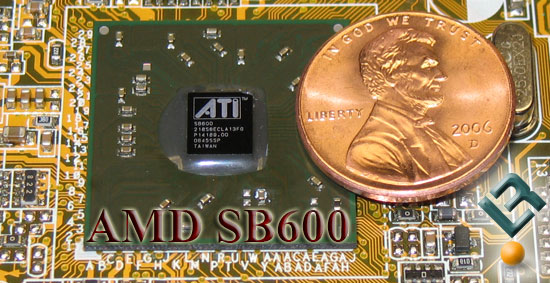AMD’s 690G/V Series Chipset Preview and Benchmarks
Final Thoughts and Conclusions

It would have been nice to have the boards further in advance, but that’s how the cookie crumbles at times. From the little amount of time that we have had the boards it seems the AMD 690G/690V family of chipsets are a step in the right direction for AMD. It was great to see AMD’s 690G beat out the NVIDIA GeForce 6150SE and do so at a lower level of power consumption on games like Quake 4, F.E.A.R. and Company of Heroes. When it comes to the performance level of the integrated graphics it’s clear that AMD has taken the lead for the time being. The feather in AMD’s hat is the native support of HDMI and DVI outputs, which is a big deal for those looking to build a home theater personal computer (HTPC). The AMD 690G is currently the only platform on the market where you can have simultaneous independent digital outputs of DVI and HDMI.
When it comes to AMD 690G motherboards we have been able to use the ASUS M2A-VM and MSI K9AGM2 and while both seem to be decent boards they are both missing things in the BIOS that we would like to see. The MSI K9AGM2’s inability to adjust the Trcd memory setting is absurd in this day and age. Anyone can download and use the SysTool utility to adjust the Trcd to desired value, but let’s face it this board is aimed at the mainstream market that wants to plug it in and set the memory timings to what they paid for. Here is one theory that can explain MSI’s stance on adjusting memory settings: They want to make setup easier for the user. Of course, this leads to my gripe regarding the Asus M2A-VM, because it doesn’t have the ability to adjust the memory timings at all. The AMD 690G/690V might just be the best chipset with integrated graphics on the market right now, but if no one build a solid motherboard to support it, then what’s the point?
For what it is worth, ASUS has the ASUS M2A-VM HDMI motherboard equipted with the optional HDMI card that installs into the PCIe x16 slot, a 1394 port, and a killer BIOS. This motherboard comes with a BIOS that allows end users to adjust the clock frequency of the ATI Radeon Xpress 1250 graphics engine from the BIOS right out of the box! This board also has unlocked other BIOS settings, but for some reason the memory timings can not be adjusted on either one of the ASUS 690G motherboards and I tried – both with BIOS 0127 and 0202. If you really want to overclock the the integrated graphics, you can use ATITool to get the job done. We were able to bump the core from 400MHz to 430MHz on both of our test motherboards (the memory clock can’t be adjusted). This is the first time we have overclocked integrated graphics and am impressed that it is even possible.
With great power consumption and gaming performance that doubles what NVIDIA is currently offering, the AMD 690 series of chipsets is clearly the top choice right now for those that are looking to build a system that can run Windows Vista 32-bit without any problems. Our performance rating was the same on all of the boards used in this review and that rating was a 3.0 if anyone was wondering.
As for the future, we have already received a bunch of e-mails from NVIDIA talking up their next chipset family that will be replacing the aging GeForce 6150SE. Next month at CeBIT, we have been told that NVIDIA will be introducing a new GeForce 7050 GPU motherboard (nForce 630a), which will be a single chip solution like the GeForce 6150SE yet retains PureVideo this time. The GeForce 7050 will also supports native HDMI and HDCP capability like the AMD 690 series. The features will be close to the same, so be sure to check back next month to see how it fairs against the boards we tested today.
Legit Bottom Line: The AMD 690G chipset performs at roughly the same level as the NVIDIA 430 series and outperforms it on the gaming front thanks to improved integrated graphics.
In closing let me leave you with one final picture that I personally like. This picture shows the true size of the south bridge (SB600) and also shows that ATI is still around! �


Comments are closed.